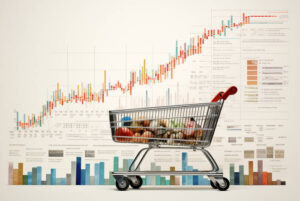Sector Contributions
When it comes to analyzing inflation rates in the euro area, understanding sector contributions is key. In the latest data, the services sector stood out as the primary driver, contributing a significant +1.64 percentage points (pp). Other notable contributions came from the food, alcohol & tobacco sector (+0.55 pp) and non-energy industrial goods sector (+0.23 pp), while energy had a slight negative impact (-0.04 pp).
Monthly Inflation Rates
For the month of April 2024, the Harmonized Index of Consumer Prices (HICP) data revealed a monthly inflation rate of 0.6% in both the euro area and the EU. Interestingly, Belgium experienced a slight deflation of -0.3% during this period, while Croatia saw a monthly rate of 1.0%.
Country-Specific Insights
- Belgium: Inflation spiked to 4.9% in April 2024, up from 3.8% in March 2024, indicating a significant increase.
- Germany: With a stable inflation rate of 2.4%, Germany reflected the overall trend in the euro area during this time period.
- Romania: Despite a slight decrease, Romania continued to maintain one of the highest inflation rates at 6.2%.
- Finland: Recorded one of the lowest inflation rates at 0.6%, consistent with previous months.
Key Data Points
- The all-items HICP for the euro area stood at 2.4% in April 2024.
- Excluding energy, the euro area’s inflation rate was 2.7%.
- Food, alcohol & tobacco made a significant contribution to inflation at +0.55 pp.
- Energy prices continued to exert deflationary pressure with -0.04 pp.
Future Outlook
Despite the relative price stability indicated by stable inflation rates in the euro area and the EU, varying inflation rates among member states point to different economic conditions and challenges. The services sector’s role as the main contributor to inflation suggests that future rates will hinge on developments in this sector.
Market Forecast
Looking ahead, the market forecast for the euro area remains cautiously optimistic. Continued monitoring of sectoral contributions, particularly in services and energy, will be crucial in predicting future inflation trends and making informed investment decisions.

